A Big 5 safari is Africa’s most elite adventure.
A royal court created specifically for the African wildlife safari and chosen entirely out of fear.
In 1990 South Africa, the home of adventure holidays, redesigned its Rand banknotes.
Replacing royalty, explorers, and heads of state, the money designed to take South Africa into the future featured the heads of five distinctive animals known as ‘The Big Five’. The gold standard for game viewing on the luxury photographic safaris that had sprung up throughout Africa since the 1970s, the popularity of the Big Five had already endured for almost two centuries.
Their fame is undeniable. The survival of the Big Five in Africa is another matter entirely.
Why were they chosen from all the game of the African bush to become symbolic royalty? The Big Five is a cliché denoting a cohort of unique animals that have this one thing in common:
Unlike the plains game that was easy and utterly defenceless prey, these animals presented a clear danger to the Gentlemen hunters undertaking the of a bygone era.
It was comparatively difficult and treacherous to kill them.
The Big 5 are not inherently dangerous.
Three of the five do not consume humans (or any creatures) and none of them are inclined, by nature to take humans on: they must be provoked before they will engage. Of course, when the hunted becomes the hunter these animals might just manage to take their revenge and turn the tables. On occasion, the creature would kill the human and this only provoked man and all his avarice, greed, wealth, status and reputation to want to kill them even more.
Today, the Big Five are still present in the following countries of Africa: Angola, Botswana, Zambia, Uganda, Namibia, Ethiopia, South Africa, Kenya, Tanzania, Zimbabwe, the Democratic Republic of the Congo, Rwanda, and Malawi.
We must wonder what this list will look like in a decade?
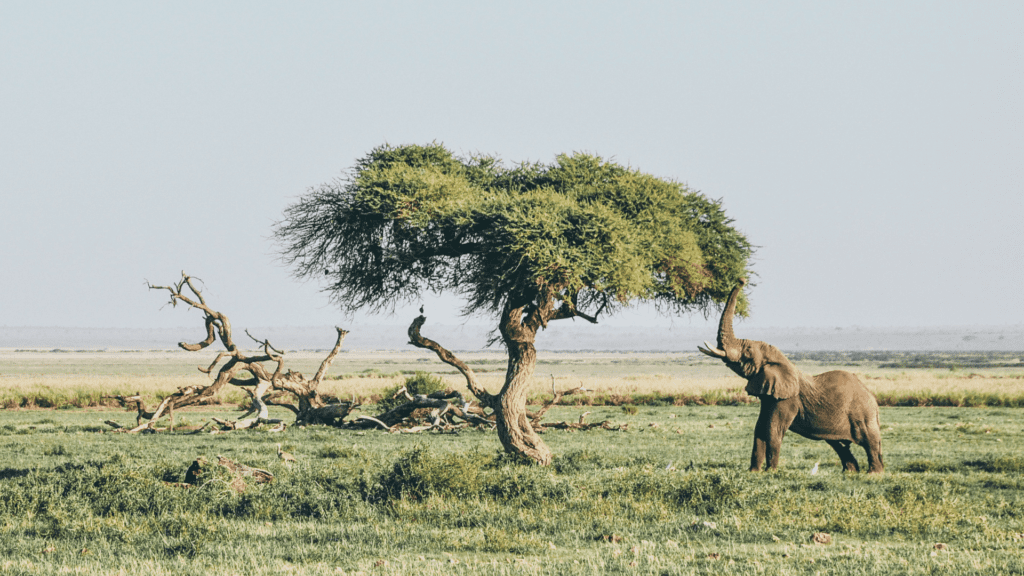
Image © Harshil Gudka, unsplash.com
When and Where to Enjoy a Big 5 safari
The Big 5 are wild animals and our safaris run in remote and wild locations. Even if an area is “fenced” for the safety of the animals the areas are incredibly large. This means that it is impossible to guarantee that you will spot all the members of the Big 5 court while you are on safari.
Having said that some very lucky travelers have spotted the Big 5 before breakfast on a single game drive. A little like winning the Big 5 lottery!
If you have your heart set on a Big 5 safari– or particular members of the elite – let us know and we can plan your safari around the best chance of specific sightings!
When is the Best Time to See go on a Big 5 safari?
As the cool weather arrives in Africa the vegetation becomes sparse and dry making it difficult for the animals to hide from view. Winter is usually a time when little rain falls and the lack of smaller ponds and puddles draw the animals to the water that is left.
All of these factors combine to make July through October the peak luxury safari season in Africa… and the most likely time to spot the Big 5.
South Africa
- South African tours include malaria-free options
- Most reliable sightings in the game reserves in South Africa bordering the Kruger National Park
- See big herds of elephant in South Africa at the Addo Elephant National Park.
Cheetah Plains in the Sabi Sands Private Game Reserve usually deliver all of the Big 5 over a three-day luxury African safari. *Best for leopard
Madikwe Private Game Reserve offers easy Big 5 safari sightings within a painstakingly rehabilitated, malaria-free area. *Leopard is elusive here.
When to Visit South Africa
May to early October
Botswana
- Beautiful and remote wilderness
- Largest elephant herds in Africa, as well as huge numbers of buffalo, lion and healthy leopard prides.
Chobe National Park is excellent for elephant but it can be very crowded.
We prefer the Linyanti for a balance of great sightings and more exclusivity. *Chances of rhino sightings are very low.
When to Visit Botswana
August to October
Kenya
- The Great Migration runs a swathe through Big 5 safari country.
- It is great for predators as the Great Migration is the equivalent of predator fast food!
- For large elephant herds visit Amboseli National Park.
When to Visit Kenya
August to November
Tanzania
- The grasslands of the Serengeti teem with wildebeest and zebra herds and the lack of trees can help you spot a leopard.
- The Ngorongoro Crater is packed with around 30,000 animals inside a varied ecosystem that is easy to reach on your bespoke safari.
When to Visit Tanzania
November to July
Zimbabwe
- Hwange is home to around 30000 elephants and the endangered black rhino
- Great camp selection, bespoke African safaris with friendly guides, and uncrowded parks make Zimbabwe the smart safari traveler’s best-kept secret.
When to Visit Zimbabwe
May to September
Learn more about the Stars of your Big 5 African Safari
African bush elephant(Loxodonta africana)

Image © David Clode unsplash.com
A large herbivore with a very thick skin and upper incisors forming long tusks of covetable ivory.
Africa has both the African forest elephant and the African bush elephant. They are difficult to hunt as they are excellent at camouflage and their temper tantrums are legendary.
The Unstoppable One
African people regard the elephant with very deep reverence. The Zulu, Tswana, and Tsonga names for the elephant are all versions of ‘the forceful’ or ‘the unstoppable’. In Zulu, the name for an elephant means to ‘crash through’ or ‘to pierce savagely’.
According to African legend, elephants transcend the animal kingdom and are in fact supernatural beings. Gods even. Elephant ivory was kept for the carving of the holiest of images as it was considered the purest substance known to man. The subsequent ornaments were thought to possess great magical powers and enabled the possessor to enjoy eternal heavenly protection.
When African people killed an elephant they carefully picked an old elephant and held ceremonies requesting the spirit of the elephant to relinquish life before the hunt. Following a successful hunt, the elephant’s life would be celebrated and every part of the carcass would be used by the tribe… often sustaining an entire village for as long as a year.
This sharply contrasts with the attitude of the Great White Hunter. And even more with the complicated economics at work through poaching.
Where to Spot Very Large Herds of Elephants
Chobe National Park (Botswana)
Addo Elephant National Park (South Africa)
Hwange National Park (Zimbabwe)
Conservation Classification: Vulnerable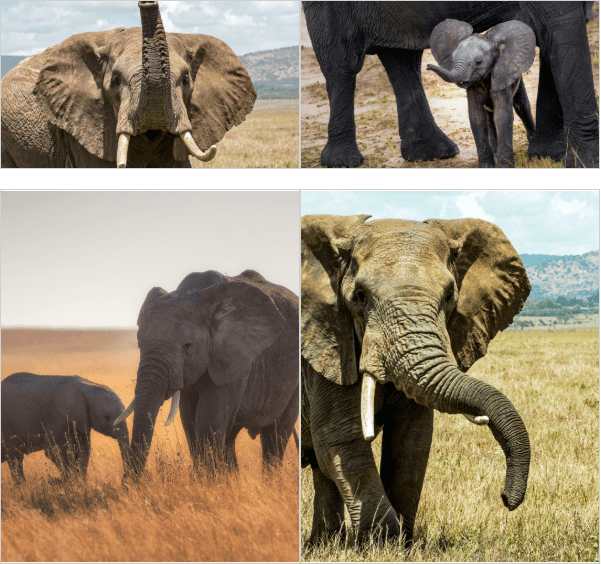
Image © David Clode, Chen Hu unsplash.com
How to Help Save Elephants:
Shun ALL ivory. And support laws that ban ivory.
Buy elephant-friendly coffee
Fairtrade coffee protects elephant habitats.
Support the best conservation efforts
- International Elephant Foundation
- The David Sheldrick Wildlife Trust
- African Wildlife Foundation
- Amboseli Elephant Research Project
Boycott circuses and unfriendly zoos
See ElephantVoices for more information.
Adopt an elephant from Reteti.
Support How Many Elephants.
Black rhinoceros (Diceros bicornis)
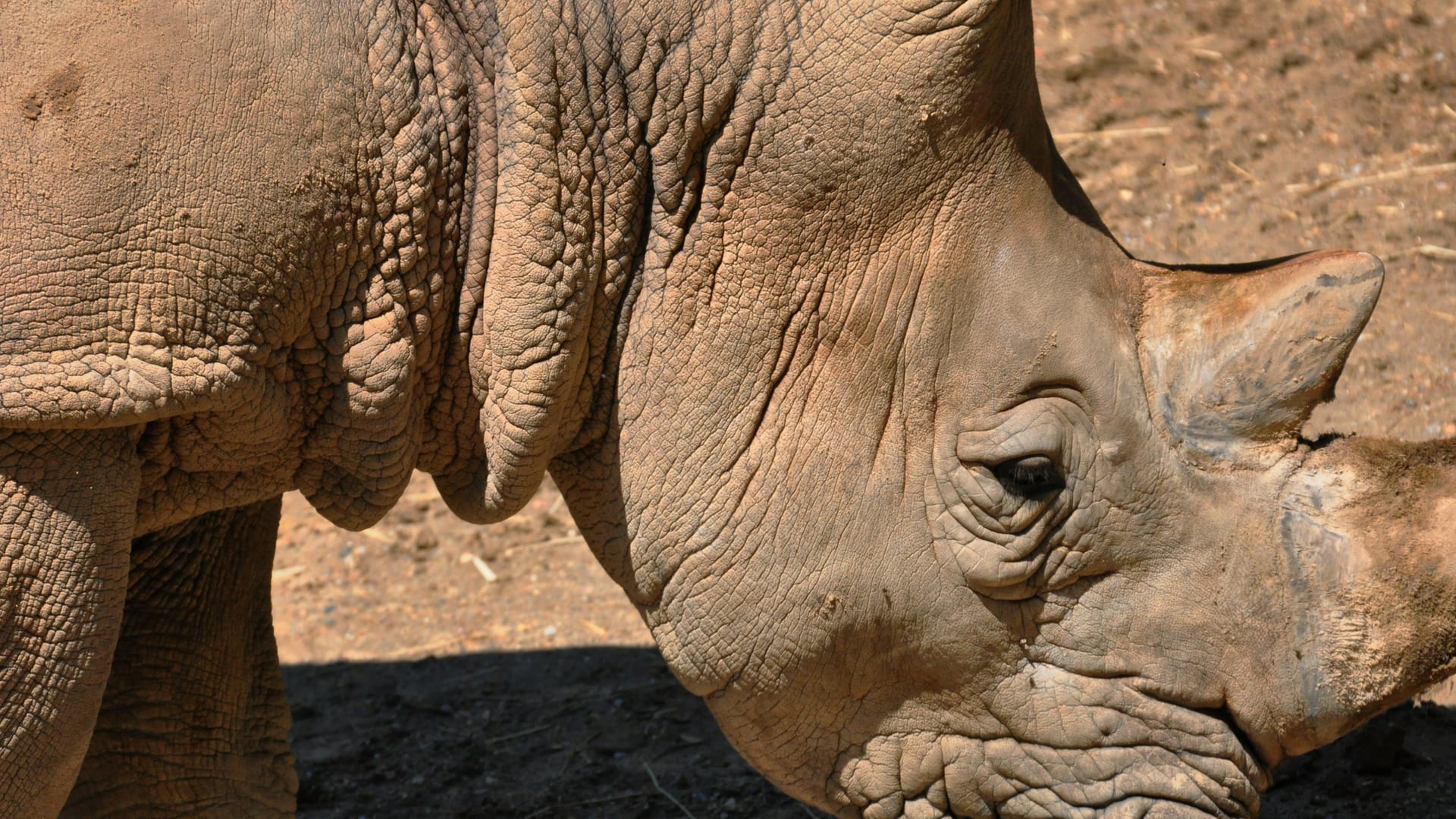 Image © Bill Jones, Jr – unsplash.com
Image © Bill Jones, Jr – unsplash.com
The black rhinoceros (Diceros bicornis) is a large herbivore with two upright horns on the nasal bridge.
Its thick (1.5–5 cm) protective skin, formed from layers of collagen positioned in a lattice structure, is very hard to puncture. Africa boasts both white and black rhino. Big game hunters preferred the black rhinoceros and they are now critically endangered.
A Towering Rage
Known as Umkhombe in most African tribes, the rhino is named for: ‘a fierce, savage person; a person who is furious or in a towering rage’. This is clearly a metaphorical allusion to the black rhino’s lack of tolerance for humans. They can be very gentle and passive but are also considered a symbol of judgment, freedom, solitude, agility and movement, inner peace, and unconventionality.
Where to Spot Rhino
Black Rhino
Etosha National Park (Namibia)
Black and White Rhino
Lake Nakuru National Park (Kenya)
Hluhluwe-Umfolozi Park (South Africa)
Ol Pejeta Conservancy (Kenya)
The southern white rhinoceros is classified as near threatened while the black rhinoceros is classified as critically endangered.
Image © Jessica Bateman, David Clode unsplash.com
How to Help Save Rhinos:
2. Changing consumer behavior across South East Asia.
3. Inspire communities to protect rhinos.
African Cape buffalo (Syncerus caffer)
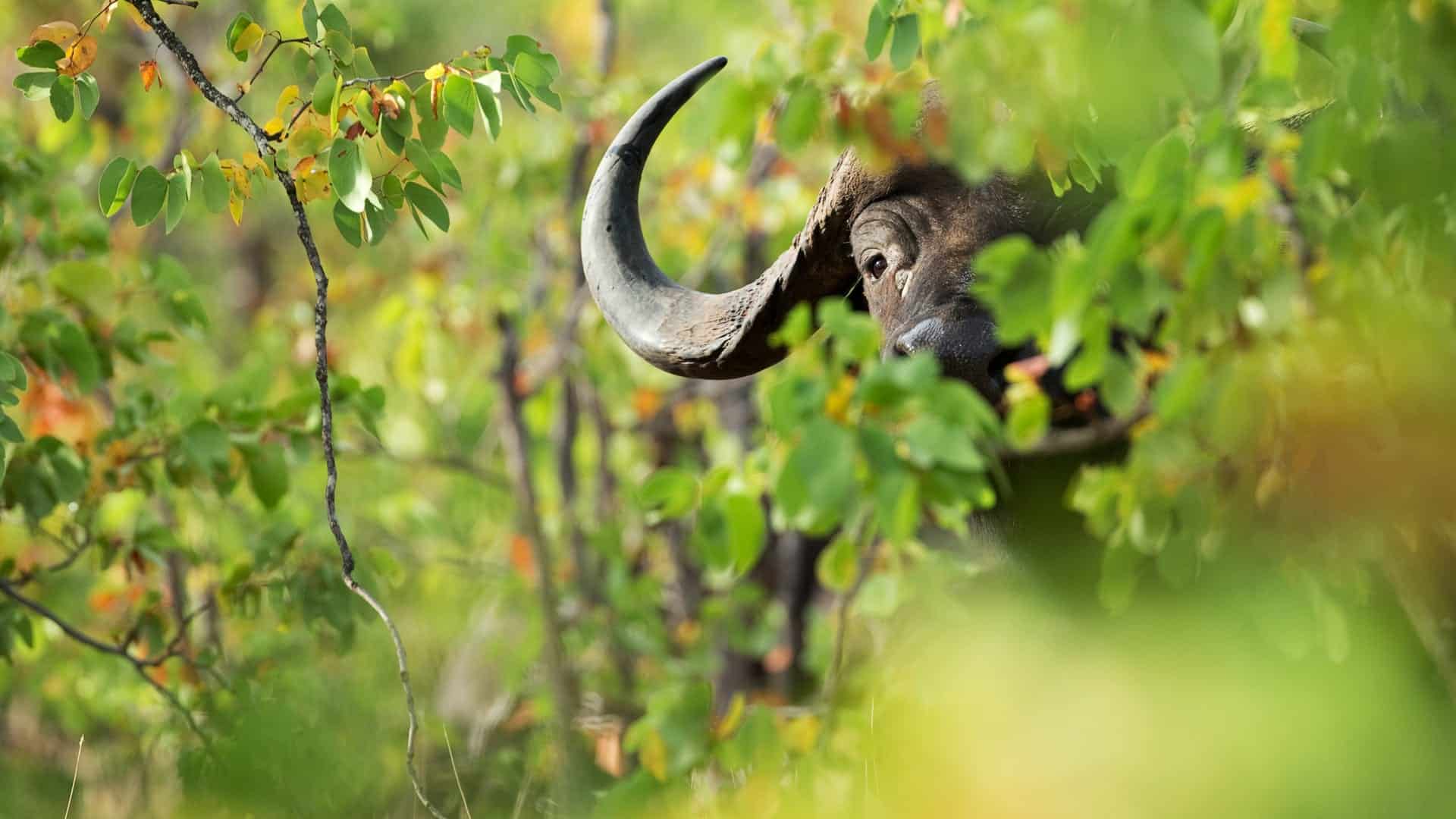 Image © Hans Veth – unsplash.com
Image © Hans Veth – unsplash.com
The African buffalo or Cape buffalo (Syncerus caffer) is a large horned bovid.
Maybe the most dangerous of the five to encounter along your African adventures, buffalo are reported to kill more hunters in Africa than any other animal. Wounded Cape buffalo will ambush and attack its pursuers.
The male buffalo has a boss – a solid bony plate of fused horn that is primarily used in defense.
The Gardeners
Africans call the Cape Buffalo by a name that alludes to fertility and nutrition. This harkens back to a time when millions of Cape Buffalo and wildebeest migrated throughout Africa in an endless migration (of which the Masai migration remains) and fertilized the land as they went.
According to African legend a dream about a buffalo standing, facing you and chewing grass is a good omen that means you will meet a powerful friend who will come to your assistance. If, however, you dream of a buffalo chasing you, you will be defeated by a powerful enemy.
Where to Spot Buffalo
Kruger National Park (South Africa)
Serengeti (Tanzania)
Chobe National Park (Botswana)
Ngorongoro Crater (Tanzania)
The Buffalo’s conservation status is of least concern, but it is experiencing a population decline in uncontrolled areas due to poaching and urbanization.
Images © Harshil Gudka, Vincent van Zalinge – unsplash.com
Lion (Panthera leo)

Image © David Clode unsplash.com
The lion (Panthera leo) is a large carnivorous feline of Africa and northwest India.
They may attack without provocation, and hunting them is a challenge due to the lion’s preferred habitat and temperament. They live within tall grasses, shrubs, and bushes from where they can ambush their prey. They are not afraid of facing any challengers and can be very unpredictable.
In the Western world, the lion is considered the king of the jungle. This is not true (see the Leopard). The pride does not even have a king as lions are neither born into rank nor do they have a permanent social hierarchy.
Debunking the myth of the Lion King further, their society is also matrilineal with female cats holding the territory. If the Lion King was real then Sarabi would have been the head of the pride.
The Judge of the Wild
The Zulu word for lion means ‘the master of all flesh’. Another Zulu term for lion is ibubesi, meaning ‘to make the final decision’, supporting the belief that the lion is king of the beasts.
In Shangaan, ‘ku va nghala‘, or simply, Ngala, ‘to be a lion’ refers to being brave or translates ‘to fight like a lion’. While Europeans consider the lion a king, Africans held the opinion that the lion was the judge.
Although most tribes in Africa revered and admired the lion there were a few who viewed this noble beast as the very personification of evil. These tribes, which generally kept large herds of cattle (the favorite food of lions), named the lion “the beast of a thousand omens” fueled by shamans and healers. Like all cats and other catlike animals, the living lion is believed by some African tribes to possess powers to protect the Earth from demonic entities.
Where to Spot Lion
Kruger National Park (South Africa)
Serengeti National Park (Tanzania)
Masai Mara (Kenya)
Lake Manyara National Park (Tanzania)
Conservation Classification : Vulnerable
Image © Shannon Litt, Wade Lambert unsplash.com
How to Help Save Lions:
Support lion conservation through WWF
Leopard (Panthera pardus)

Image © Joshua Cotten, unsplash.com
The leopard (Panthera pardus) is a large, carnivorous feline (half the size of a lion) and is the most difficult animal to hunt.
The most elusive and the smallest of our royal elite they are also the most difficult to spot. Very few hunting licenses are issued for leopards and they are nocturnal and secretive. Solitary and wary of humans they are also baited, hounded or stalked (although this method has a very low success rate).
A leopard’s spots are known as rosettes and black leopards seem solid in color as their spots disappear against the rest of their fur… we call them black panthers.
The (real) African King
All African tribes regard the leopard as an animal that symbolizes all that is noble, courageous and honorable. In the Zulu Kingdom, the wearing of Leopard skins was considered a sign of courage and bravery as well as stealth, patience, and cunning (all incidentally qualities of a leopard).
The Leopard is called ingwe by the Zulus. A word that originally meant ‘pure sovereignty’ or ‘pure kingship’. In very ancient times, a king who supposedly ruled over other kings was called nkwetona or the Leopard – Embodying ferocity, aggression, being the Great Watcher, and courage.
The leopard skin has been used in ceremonies and considered to be imbued with special powers. In Africa, they were thought of as animal guides for the spirits of the dead. There was also a connotation between the leopard and personal power, self-confidence, gracefulness, and stealth.
Where to Spot Leopard
Serengeti (Tanzania)
Lake Nakuru National Park (Kenya)
Sabi Sands Game Reserve (South Africa)
South Luangwa National Park (Zambia)
Conservation Classification: Vulnerable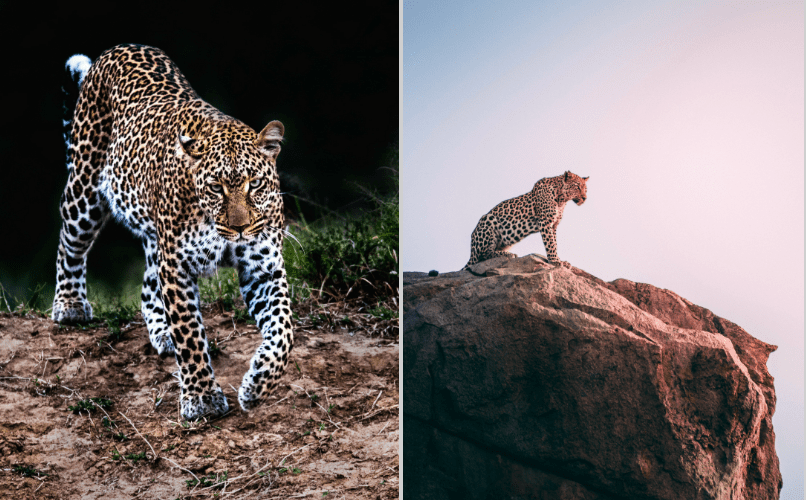
Image © David Clode, Geran de Klerk unsplash.com
How to Help Save Leopards
Support Leopard conservation

